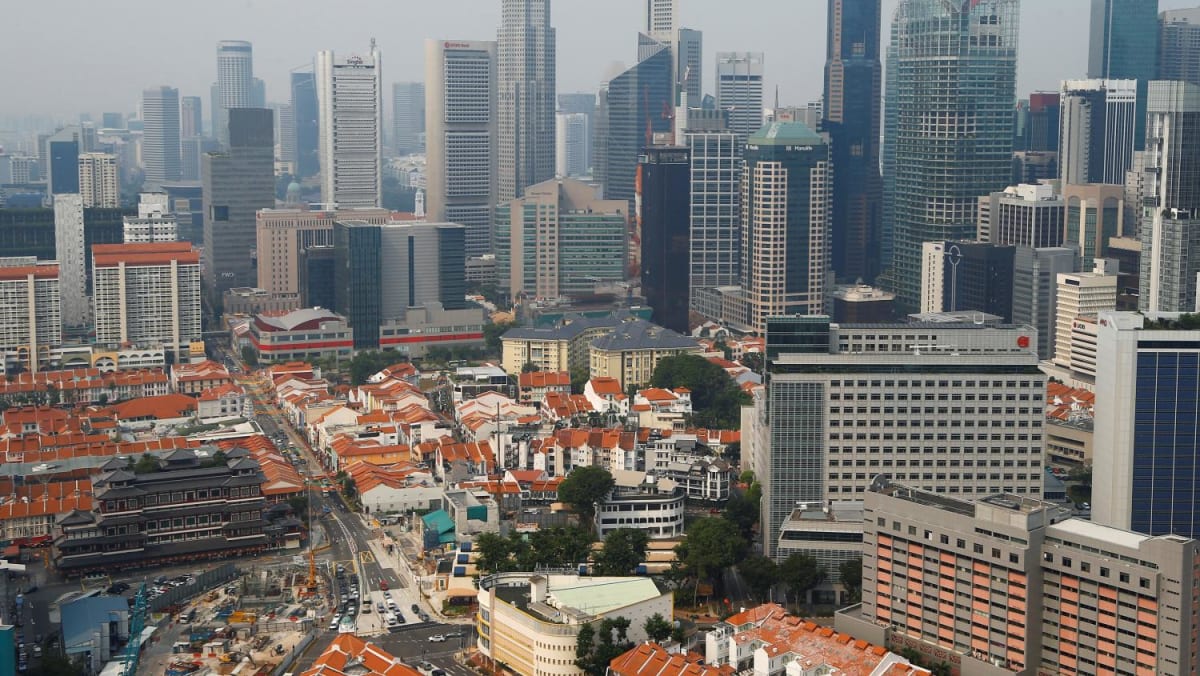
SINGAPORE — Shutting down elevators in ministries during non-peak hours and phasing out bottled water in government meetings are among the strategies and initiatives that government bodies are taking to address climate change.
The inaugural GreenGov.SG report published on Friday (Dec 15) by the Ministry of Sustainability and the Environment (MSE) also detailed the levels of greenhouse gas emissions as well as energy and water usage by the public sector.
It covered the sector’s assets in Singapore, including office buildings, healthcare facilities, schools, public utilities installations, public transport infrastructure, and vehicles.
The report, the first in Southeast Asia, also highlighted the green innovations that some government agencies and buildings have taken to reduce emissions.
Singapore aims to achieve net zero emissions by 2050. The GreenGov.SG initiative aims to have the public sector achieve this goal five years ahead of target, by around 2045.
This means that by 2030, the public sector has to reduce its energy and water usage by 10 per cent and the waste it disposes of by 30 per cent respectively. This goal was first announced by the Government in 2021.
Friday’s report also stated that emissions are expected to peak around 2025 as the economy reopens after the Covid-19 crisis and new major public infrastructure is built.
For financial year (FY) 2022, the public sector’s Energy Utilisation Index was 120.4 kWh/m2, a 1.3 per cent increase compared to the baseline.
This index is calculated by taking total electricity used divided by gross floor area of a building.
The baseline for each ministry’s index was taken from the average of FY2018 to FY2020 to reflect hybrid working arrangements after the pandemic.
This index for MSE, for example, showed the highest increase of 6.6 per cent. The increase was due to a “scaling up of operations to strengthen Singapore’s water and food resilience”, MSE said in response to TODAY’s queries.
The public sector has set a target to improve this index by 10 per cent by 2030 from the average of FY2018 to FY2020.
Regarding Scope 1 and Scope 2 emissions, the report found an overall 5.3 per cent decrease compared to the baseline emissions for all agencies.
Scope 1 emissions relate to the direct burning of non-renewable fuel on site. This entails the combustion of natural gas, town gas, petrol and diesel, among others.
Scope 2 emissions relate to purchased electricity consumed.
The Prime Minister’s Office was found to have the highest increase of 20.1 per cent from its baseline greenhouse emissions. Baselines for emissions are calculated from FY2020.
REDUCING CARBON EMISSIONS
To reduce carbon emissions, government agencies are exploring ways to power operations using alternative low-carbon energy sources.
The Land Transport Authority (LTA) will be switching to a cleaner energy bus fleet by 2040. By 2030, electric buses are expected to make up half of the public bus fleet here.
To harness solar energy and support the national target to deploy at least 2 gigawatt peak (GWp) of solar energy by 2030, government agencies are working to achieve at least 1.5 GWp by then.
As of FY2022, about 3,300 public housing blocks under the Housing and Development Board (HDB) and 161 public sector buildings have been installed with solar panels.
Energy generated from the solar panels on HDB blocks is used to power common services such as lifts, lights and water pumps during the day, with excess energy channelled to the grid.
Hospitals require hot water for sanitation, decontamination, sterilisation, food services and showering.
Ng Teng Fong General Hospital and Jurong Community Hospital have installed a solar-powered device that converts natural sunlight into a heat source to produce hot water more efficiently.
To date, these two hospitals have achieved more than 900,000 kWh of energy savings a year. This energy is enough to power the electricity needs of 220 four-room HDB flats for an entire year.
REDUCING WATER CONSUMPTION
In FY2022, the public sector’s Water Efficiency Index — or the water used by a person a day — was 63.9 litres, a 0.8 per cent increase compared to the baseline.
Similar to the approach taken for the Energy Utilisation Index, the baseline has been established as the average of FY2018 to FY2020.
The increase was largely due to a rise in the number of occupants and visitors to public sector premises in FY2022, along with the gradual reopening of the economy and increased activities, which resulted in greater water usage across the sector.
The Ministry of Home Affairs reported the highest change in this index from its baseline, with a 25.8 per cent increase.
Agencies are also exploring more ways to enhance their water efficiency.
One approach is to replace potable water with non-potable water, such as for irrigation, general washing and cooling.
Smart sensors have been installed at the Ministry of Foreign Affairs, for instance, and rainwater is collected in special tanks.
In the absence of rain, the irrigation systems will be turned on and the collected rainwater will be used to water the plants and trees around the ministry’s compound.